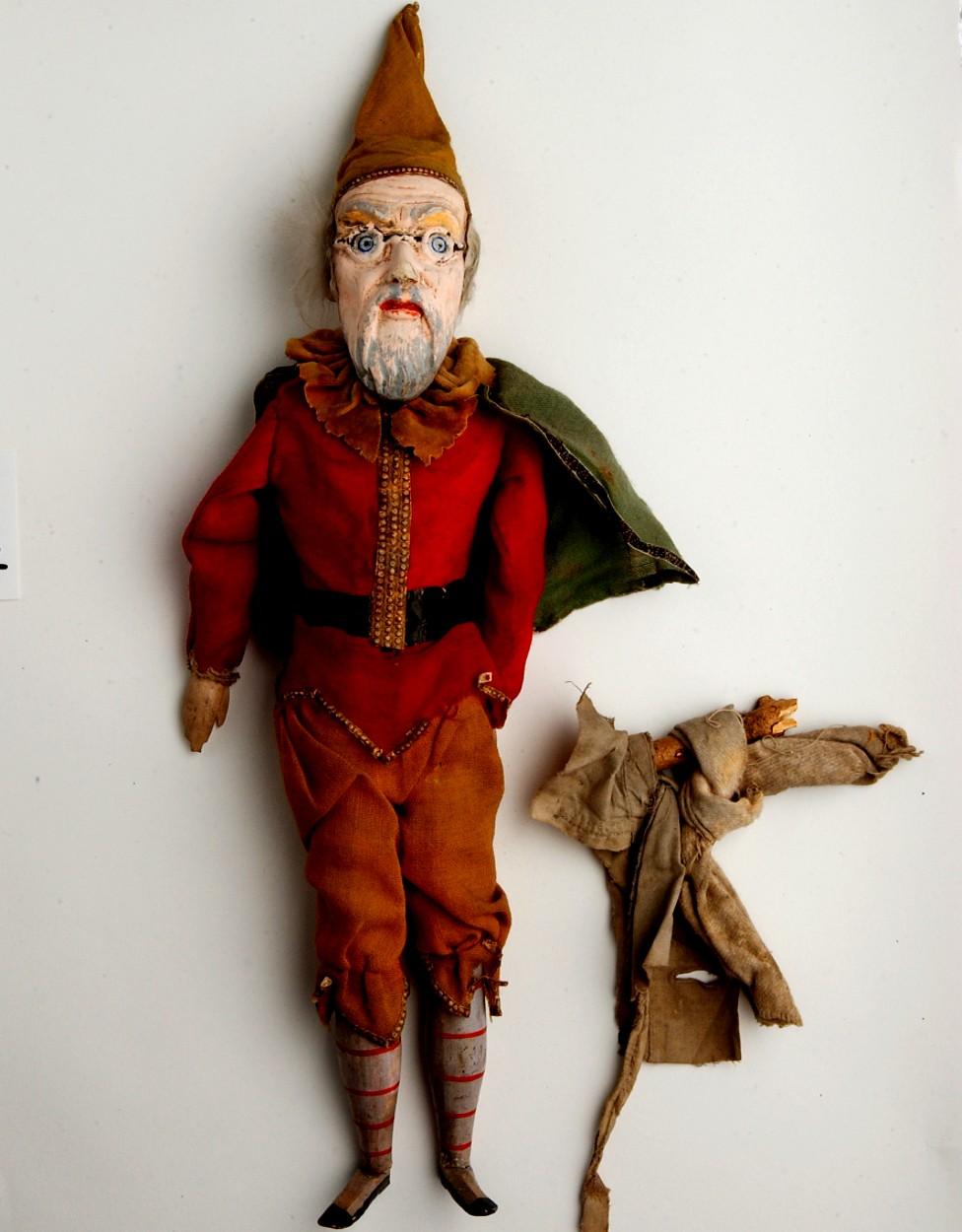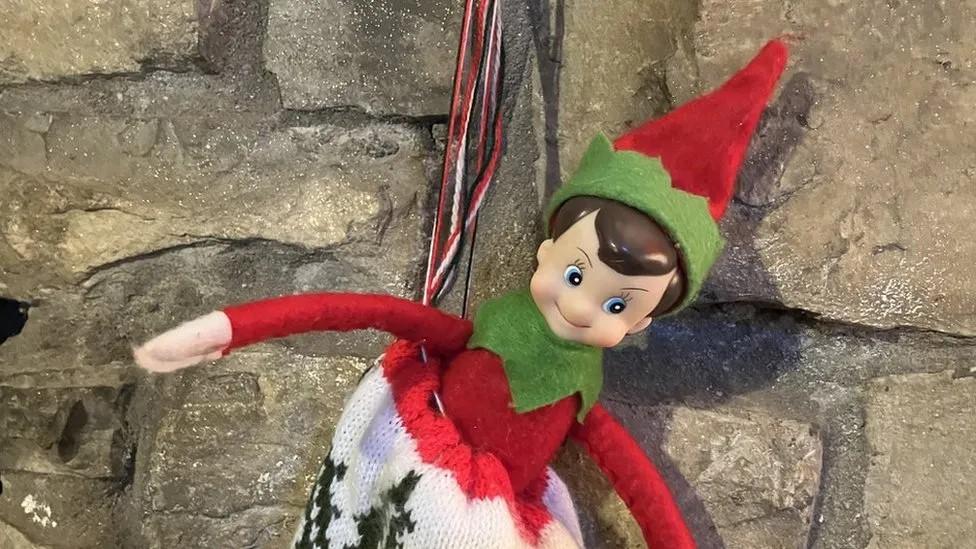Is Welsh Santa the original Elf on the Shelf?
- Published

The sign asks Sion Corn to call here - but do they want Santa or a friendly house elf?
There's a little Christmas helper who comes to stay for the festive period and lives in your house, where he surveys everything going on.
Sound a bit familiar? The Elf on the Shelf, external may have been a US import which has taken off rapidly in the UK over the past decade, but, according to certain traditions, Wales may have got there first.
In a social media post, a Welsh language teacher also known in his online persona as Dr Cymraeg (Welsh Doctor) has suggested an Elf on the Shelf type origin for the character now known as Wales' Santa Claus, or Sion Corn in Welsh.
But Sion Corn may not be the present-delivering figure the Western world calls Santa Claus at all.
Sion is the Welsh version of John, and Corn can be translated as horn. In one version of history, according to Doctor Cymraeg, it was common practice for homes to have a decorative horn hanging in the home.
Allow X content?
This article contains content provided by X. We ask for your permission before anything is loaded, as they may be using cookies and other technologies. You may want to read X’s cookie policy, external and privacy policy, external before accepting. To view this content choose ‘accept and continue’.
In the run-up to Christmas, a festive little elf-type figure would come and live in the horn, peeking out from the top to watch out for what was going on.
It became known as Sion Corn, but as time went by, because it was so associated with the Christmas period, Sion Corn simply became how most people referred to Santa Claus in Wales and this origin story faded.
A more commonly accepted version of Sion Corn's name however is Jack of the Chimney, with theories that the word corn refers to "corn simdde" or chimney stack, and was the place where Sion Corn came into the house, in the same way as Santa Claus.
Like a lot of "tradition", especially those surrounding Christmas - where modern Santa is largely a construct of the Victorians - Sion Corn is not actually that old, and nor is it always the case that Welsh-speaking people use the term to describe Santa, or certainly not in the past.
But there is a suggestion that the original Sion Corn did have more in common with an elf figure than a jolly man in a red suit.
Dr Juliette Wood, a tutor at Cardiff University's School of Welsh and a folklore specialist, says the first recorded mention of Sion Corn is as recent as 1923.
A Welsh scholar J Glyn Davies, composed a collection of poems and songs, Cerddi Huw Puw and wrote one about a character called Sion Corn which brought it to the attention of the wider Welsh-speaking world.
He wrote at the time he had heard his family speak of the character but it is not clear if Sion Corn was simply a tale within Davies's own family or whether it had any previous wider exposure.

This Christmas figure donated to Museums Wales is a good approximation of a halfway house between an elf and Santa, a bit like Sion Corn may have been
Dr Wood says of the popularisation of Sion Corn: "It shows something you get in folklore which is it will become part of culture, and culture kind of morphs it, and particularly one of the things popular culture does to make it sound authentic is to make it old.
"Davies said in his note that this is a family tradition and that it probably goes back to his mother's family in Edern (on the Llyn peninsula).
"He said it was a sort of family elf who got the children to bed early and brought presents at Christmas."
Although clearly stating Sion Corn is "not the original Elf on the Shelf", Dr Wood suggests it is part of a folklore collection of household spirits whose function is "very domestic, usually involved with the young people and the servants, and keeping them in order".
She explains: "So if the house is kept clean and the kids go to bed on time, the house spirit is very happy, and will leave them shillings or bits of money, little gifts, whatever, [but] not particularly associated with Christmas.
"That said, there are all kinds of Christmas elves - Scandinavia particularly is very keen on them, and they are involved with if the child has been good they will leave them presents, and they come down the chimney.
"So it seems to have been a funny mix of a number of traditions."

The good news is the elf will return to its home with Santa once the kids go to bed on Christmas Eve
Dr Wood said she could be "speculating wildly" but Davies' family was very involved with the sea and in the 1920s there would have been a lot of contact between Scandinavian sailors and those on the Welsh coasts.
"I wouldn't be surprised if you don't have a fusion of those things through that connection."
But whether Sion Corn was a forerunner of the Elf on the Shelf or not, parents across the land can be happy with this thought.
For those worn out by the antics of their own household elf, rejoice in the knowledge the creepy little watcher - sorry, friendly little helper - will be disappearing back the North Pole sharpish overnight and you can relax and tuck into the sherry unobserved.
Until next December of course... Merry Christmas!
- Published18 December 2022

- Published11 December 2017

- Published29 November 2023
